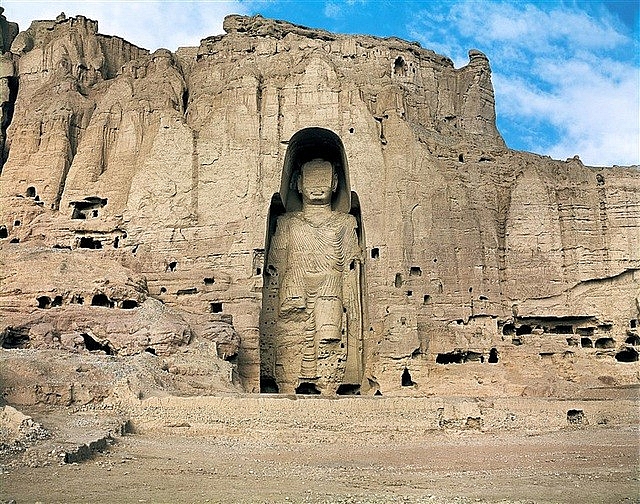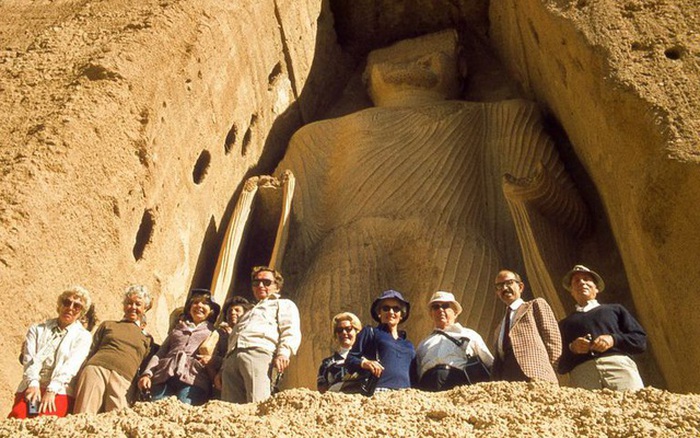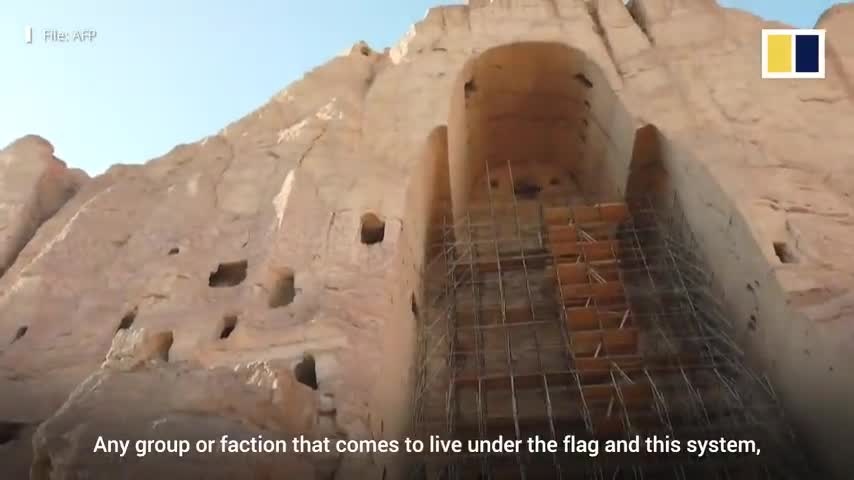 |
| The Great Buddha statue was carved into a rock niche in Bamyan, Afghanistan, before being destroyed by the Taliban. (Source: NBC News) |
The Buddha statues at Bamyan are two 6th century Great Buddha statues carved deep into the rocks in the Bamyan valley, in the Hazarajat mountains, central Afghanistan. This place is about 230 km north of the capital Kabul, located at an altitude of 2,500 m above sea level.
Bamyan is located on the “Silk Road”, which is a travel route connecting the Chinese market with the Western world. It was the site of several Buddhist monasteries, thriving centers of religion, philosophy and the arts. Experts say that Bamyan is also a cultural site about Buddha.
The two statues are symbols of the classical mixed sculptural style of Gandhara art. This is an art with a delicate blend of Western and Eastern harmony, especially Buddhist art.
Previously, these two Great Buddhas were once considered the largest standing Buddha statues in the world, with one being 53 meters high and the other 38 meters high.

The main structure of the building is carved directly into the sandstone cliff, while the simulated details are made of mud mixed with straw, then covered with mortar. The large statue is painted red, while the other one is painted many colors.
In March 2001, radical Muslim Taliban rebels used explosives to destroy the ancient structure before the helplessness of the entire world. Afterwards, international public opinion strongly condemned this action. Meanwhile, many local people said they are still haunted by the fierce destruction of the monuments.
For 20 years since its destruction, the cliff has remained empty. Recently, the Afghan government restored the image of two Great Buddha statues by projecting the works into the stone niche in 3D format, attracting the attention of public opinion at home and abroad.
Afghan people are excited to see the Great Buddha again. Experts say that 3D projection is a temporary solution when Afghanistan and the international community have not found a solution to restore the project.
Before that, the Buddha statue area also had a complex of monasteries and rooms, built by digging caves.






